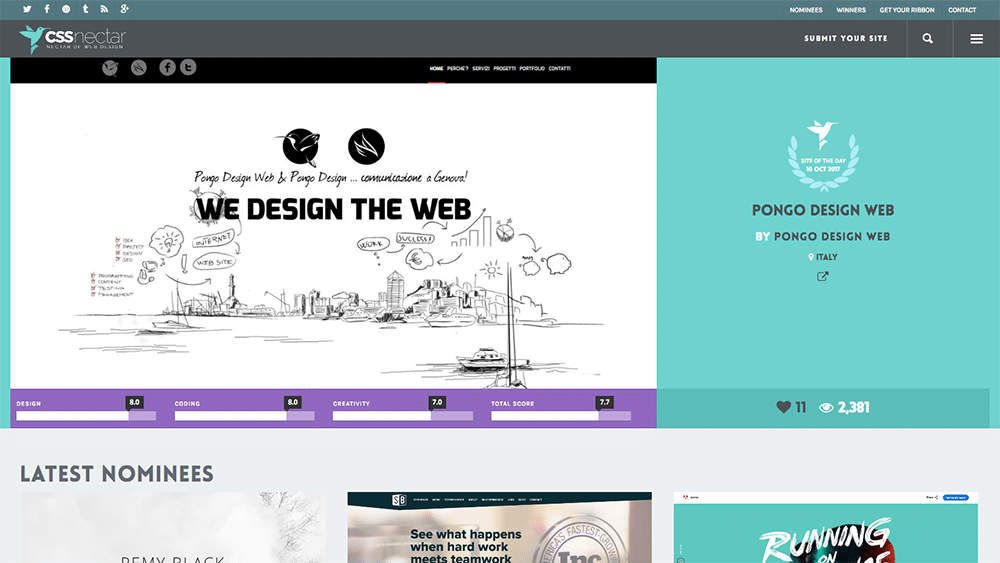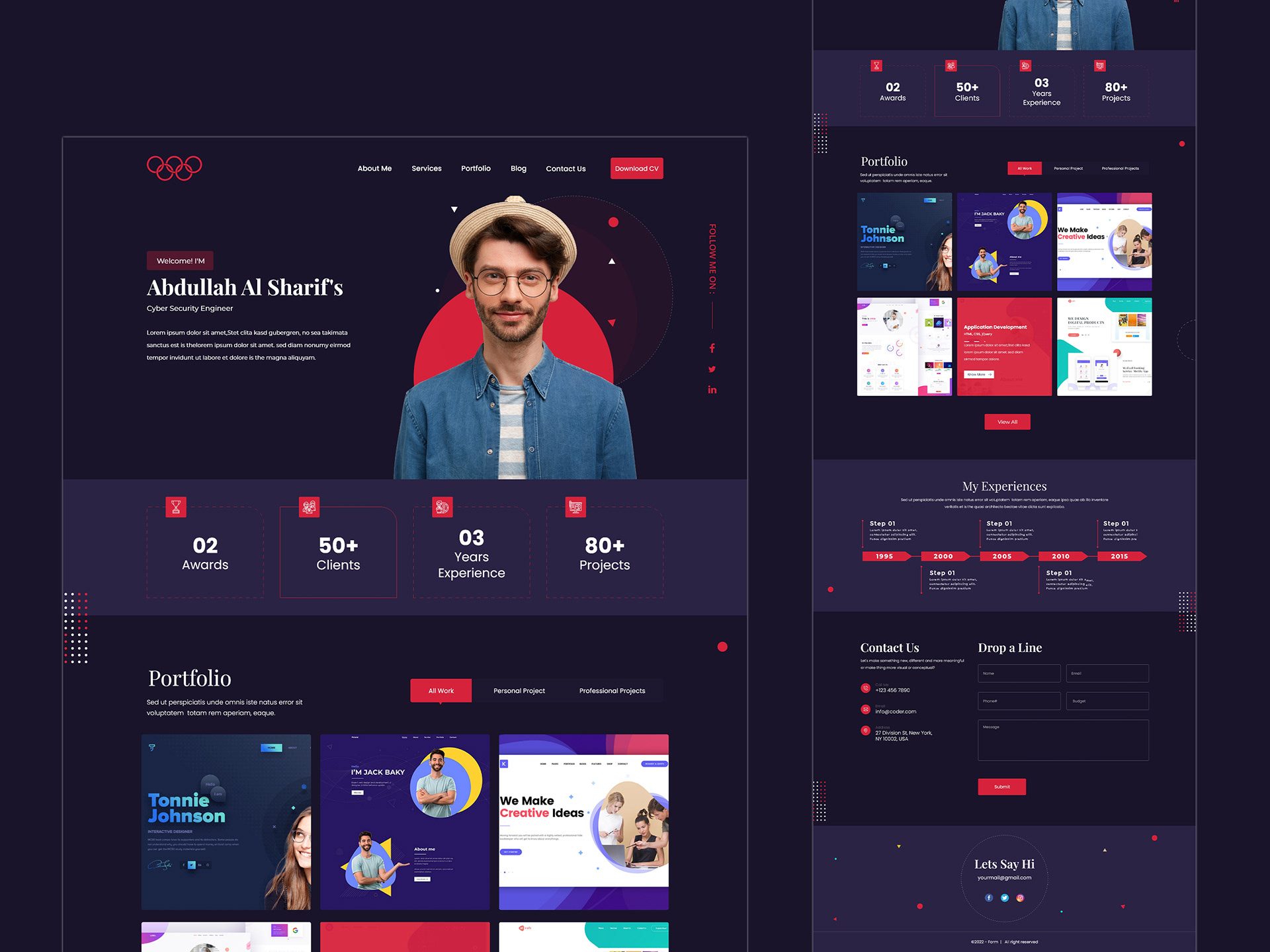How to Improve Your Website Design for Better Conversion Rates
How to Improve Your Website Design for Better Conversion Rates
Blog Article
Modern Site Design That Captures Attention and Converts
In a significantly electronic landscape, modern internet site style has actually become an essential variable in recording customer attention and driving conversions. By tactically using visual power structure, receptive layouts, and engaging interactive elements, developers can develop experiences that not only bring in visitors but additionally facilitate purposeful communications. Additionally, reliable call-to-action techniques play a vital duty in assisting individuals toward desired outcomes. As we explore these vital components, it comes to be clear that understanding their interaction can considerably influence a site's efficiency and customer fulfillment. What are the vital elements that really make a difference?
Importance of Visual Power Structure
Aesthetic power structure is a vital element in internet site design, as it guides users' attention and improves their overall experience. By purposefully organizing content, developers can direct individuals to one of the most important information initially, consequently raising involvement and improving functionality. Effective aesthetic hierarchy employs numerous methods, consisting of size, comparison, spacing, and color. Larger aspects naturally draw the eye, while contrasting colors can highlight vital messages, making them stand out amongst more restrained elements.
Integrating a rational flow in web content plan is important; for example, placing one of the most critical details at the top of a page fosters prompt recognition. Additionally, consistent use of typography, such as varying font sizes and designs, aids establish a clear web content structure. This organization not only aids in navigation however also constructs trust, as users really feel a lot more comfortable when they can conveniently locate what they are searching for.
Eventually, a well-executed aesthetic hierarchy not only improves aesthetic allure yet additionally significantly affects user behavior. By focusing on crucial elements and making sure a smooth experience, designers can successfully convert visitors right into clients, strengthening the value of this fundamental style concept in contemporary web site advancement.
Responsive Design for All Devices
Producing a seamless experience across numerous tools is vital in today's electronic landscape, where individuals access websites from smartphones, tablets, and desktops alike. Receptive layout is a crucial strategy that makes sure sites adjust fluidly to different screen resolutions, dimensions, and positionings. By employing adaptable grids, images, and CSS media questions, designers can develop designs that maintain aesthetic honesty and performance, no matter the gadget being made use of.
The relevance of receptive layout prolongs past looks; it straight affects user interaction and conversion prices. A site that functions well on all tools encourages longer brows through and decreases bounce prices, as customers are more likely to connect with content that is simple to navigate. Search engines, specifically Google, prioritize mobile-friendly sites in their rankings, making responsive layout an essential element of search engine optimization (SEO)
Including responsive design not just boosts user experience but also simplifies the development process. By creating a single site that works across gadgets, organizations can conserve time and sources contrasted to developing separate mobile and desktop versions. Ultimately, receptive design is a fundamental technique for modern site layout, ensuring availability and fulfillment for all customers, despite their gadget.
Involving Interactive Aspects
While a responsive style lays the groundwork for a practical site, integrating engaging interactive elements is vital for recording customer interest and promoting deeper connections. Website Design. Interactive elements, such as computer animations, tests, and clickable infographics, produce a more dynamic customer experience, urging visitors to spend even more time on the site
Incorporating interactive features can additionally assist individuals through complex details, making it less complicated to digest content. As an example, interactive sliders can highlight product variations, while ingrained videos can give demos or testimonies that resonate greater than static images or message. Additionally, gamification strategies, like benefits for finishing jobs or engaging with web content, can improve user inspiration and retention.
Reliable use interactive components not just improves the individual experience yet can also bring about greater conversion prices. By making interactions useful and pleasurable, companies can cultivate a feeling of loyalty and trust fund with their audience. It is necessary to balance interactivity with performance; excessively Website Design complicated attributes might impede website rate, negatively affecting user satisfaction. Eventually, incorporating properly designed interactive components can substantially boost a website's efficiency, driving engagement and conversions in today's competitive digital landscape.
Streamlined Navigation Practices
Efficient navigation is a foundation of any type of successful site, as it directly influences customer experience and web content accessibility. Streamlined navigation techniques make certain that individuals can quickly find information, enhancing their communication with the website. A well-structured navigating menu should be simple and instinctive, generally including a restricted number of primary categories to stay clear of frustrating visitors.
To attain streamlined navigating, designers ought to prioritize a hierarchical framework that realistically organizes content. Applying breadcrumb tracks can supply individuals with context concerning their present location within the website, permitting for seamless backtracking. In addition, making use of drop-down food selections can effectively conserve room while still supplying access to subcategories.
Receptive design is crucial, as navigating ought to be useful across all tools (Website Design). Mobile customers, in specific, benefit from touch-friendly food selections and retractable sections that maintain use without jeopardizing aesthetic appeals

Effective Call-to-Action Approaches
A well-crafted call-to-action (CTA) is vital for guiding users towards desired results on a website, as it motivates them to involve with content or make an acquisition. To maximize their efficiency, CTAs need to be clear, compelling, and tactically placed throughout the website.
First, use action-oriented language that interacts necessity or value, such as "Start," "Sign up with Currently," or "Case Your Discount rate." This language not just motivates users however also sets clear assumptions regarding the next actions.
2nd, consider layout components; CTAs ought to stand apart visually through contrasting colors, enough whitespace, and popular positioning. A button that is easy to see and click boosts the likelihood of user communication.
In addition, customizing CTAs based on user behavior or demographics can significantly boost interaction. Tailored messages resonate extra with users, driving higher conversion prices.

Conclusion
In final thought, modern-day website style highlights the assimilation of visual power structure, receptive layouts, engaging interactive components, streamlined navigation, and reliable call-to-action approaches. These parts jointly enhance user experience, ensuring that visitors remain engaged and motivated to explore material better. By focusing on these design concepts, businesses can significantly improve user retention and conversion rates, eventually bring about better success in the electronic landscape. The continual development of website design highlights its vital function in effective on-line interaction and advertising and marketing.
In a progressively digital landscape, modern-day site design has actually arised as a pivotal variable in catching customer focus and driving conversions.Visual power structure is a critical aspect in site style, as it guides users' focus and enhances their total experience.The significance of responsive layout prolongs past looks; it directly affects user interaction and conversion prices.Incorporating receptive design not only enhances individual experience but additionally improves the growth process. Eventually, responsive style is a basic technique for modern-day website style, ensuring access and complete satisfaction for all customers, regardless of their gadget.
Report this page